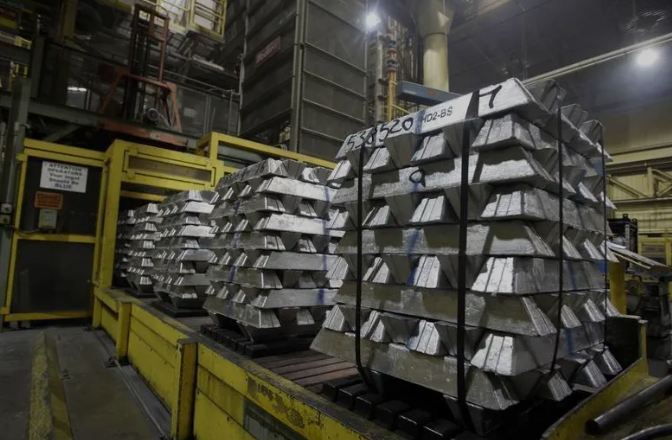Russia plays a crucial role in the international market as one of the world’s leading aluminium producers. The Russian aluminium export value amounted to US$4.4 billion in 2021, experiencing a growth to US$4.9 billion in 2022.
Having originated in the Soviet era, the sector witnessed significant transformations during the post-Soviet era, marked by privatisation, market-oriented reforms, and the emergence of key players like RUSAL. As one of the world’s leading aluminium producers, Russia’s industry plays a pivotal role in international trade relationships and global market dynamics.
However, geopolitical events, such as the invasion of Ukraine-Russia geopolitical crisis in 2022, COVID-19, boycotts, ban on raw materials, sanctions proposal on aluminium and the looming green transition, have introduced unprecedented challenges to trade, pricing, and industry models. This content delves into the evolution of the Russian aluminium industry, exploring its historical roots, pivotal players like Rusal, and the contemporary geopolitical troubles that shape the sector’s trajectory.
Development of Russian aluminium: From zero to global prominence
The inception of the Russian aluminium sector dates back to May 14, 1932, when the Volkhov smelter in the Leningrad Oblast produced its first batch. The Dneprovsky smelter in Ukraine followed suit a year later. The demand for aluminium outpaced production capacity, leading to the construction of many new facilities in Russia.
The crucible of World War II spurred industrial development in the eastern regions. Evacuation efforts led to the relocation and reconstruction of smelters, notably from Volkhov and Tikhvin to the Urals and Western Siberia. Post-war, the Soviet Union’s demand for strategic metals fueled rapid growth in the industry. With accelerated aluminium production, the USSR had to source alumina from overseas, including Guinea and India.
The 1980s marked the beginning of complex challenges for the sector. The dissolution of the Soviet Union in the 1990s led to the loss of key alumina refineries in Ukraine, Kazakhstan, and Azerbaijan. This, coupled with a lack of raw materials, isolation of the economy, and absence of international connections, threatened the industry.
Privatisation efforts in the early 1990s saw Western companies gaining control of Russian smelters. Tolling schemes became prevalent, where alumina was imported and refined, and aluminium was exported. However, this system proved unsustainable as the Russian industry faced financial weakness and dependence on external market trends.
In 1997, Oleg Deripaska initiated the formation of Siberian Aluminium, splitting from the Trans-World Group. This marked a new era, as Siberian Aluminium became the industry’s largest vertically integrated firm. He actively pursued acquisitions and partnerships, consolidating key facilities.
The year 2000 saw the formation of Russian aluminium, combining assets from Siberian Aluminium and Sibneft. Deripaska became the CEO of the new entity, positioning it as a formidable player in the global market, accounting for about 10% of the world’s aluminium output. Today, Russian aluminium stands as a testament to the sector’s resilience.
RUSAL: An industrial Titan of Russia
Founded in 2000, RUSAL has grown into a global giant with a vertically integrated approach covering the entire aluminium production chain. The company has consistently demonstrated its commitment to innovation, sustainability, and competitiveness. With its headquarters in Moscow, Russia, and incorporation in Jersey, UC RUSAL has played a role in shaping the modern aluminium industry. In 2021, the company proposed a demerger of high-carbon assets and a change of name to AL+, reflecting its commitment to sustainable practices.
In terms of sheer production, RUSAL stands out as the world’s second-largest aluminium company by primary output, responsible for almost 9% of the world’s primary aluminium output and 9% of global alumina production. The company’s reach extends across 13 countries on five continents, employing over 61,000 people and operating assets ranging from smelters to alumina refineries and bauxite mines.
RUSAL is proactive in pursuing projects to expand its production capacity and enhance operational efficiency. The company’s strategic initiatives include significant investments in research and development, exploring new production methods, and improving environmental sustainability. One of RUSAL’s recent endeavours involves a major investment of ₽400 billion in a new alumina refining plant in St Petersburg. The construction includes four technological lines and infrastructure improvements at the Baltic port of Ust-Luga, promising to add more refining capacity to meet future demands. This ambitious project enhances RUSAL’s production capabilities and contributes to job creation, with an expected 7,500 new positions.
RUSAL’s approach is not only centred on expanding production but also on sustainable practices and international partnerships. Strategic investments in international projects, such as acquiring a 30% stake in China’s Hebei Wenfeng New Materials, are part of RUSAL’s efforts to secure vital supplies in the face of geopolitical shifts.
RUSAL has consistently demonstrated a commitment to sustainability, positioning itself as a leader in the production of aluminium with a low carbon footprint. Over 90% of the company’s aluminium is crafted using clean and renewable hydroelectric power, amounting to a mere 2.4 tons of CO2 equivalent per tonne of aluminium.
Geopolitical risks and opportunities
The Ukraine-Russia geopolitical crisis began in February 2022 and has reverberated across all industries, including the aluminium sector, introducing a complex web of geopolitical and economic dynamics. The war disrupted Russian aluminium in various ways. Loss of access to Ukrainian resources and the imposition of sanctions prompted Russian companies to diversify their sources of alumina, with increased imports from India and other countries, altering global trade patterns.


